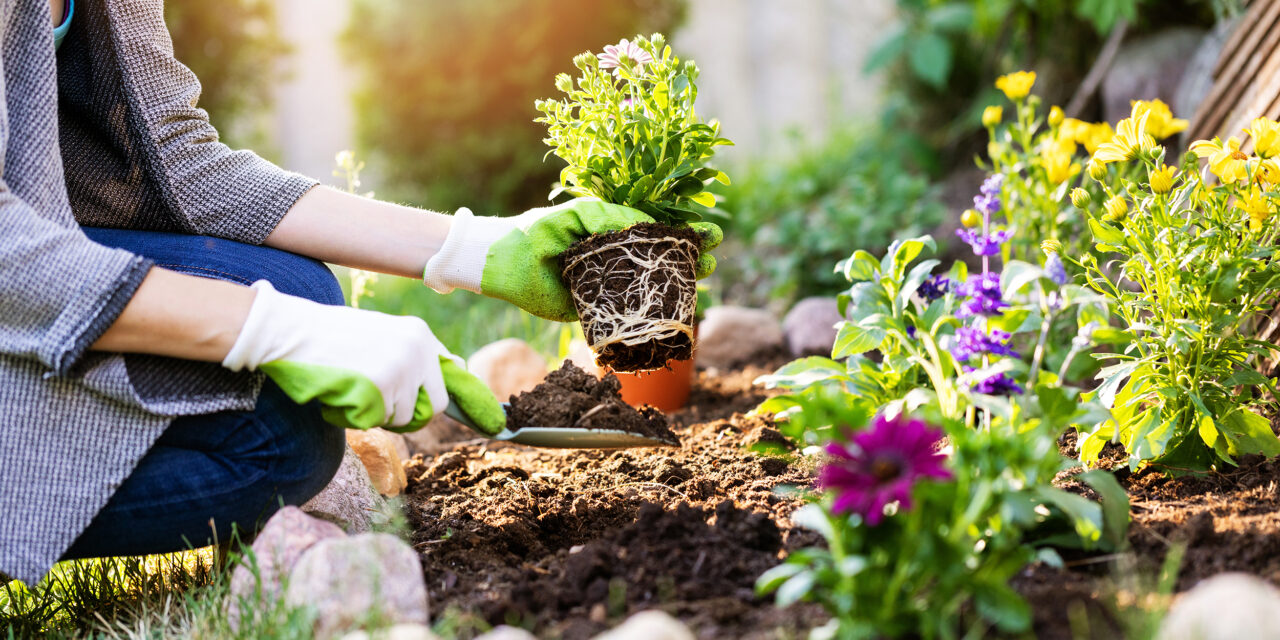One way to turn a house into a home is by creating your very own garden; besides being fruitful, they can serve as a beautiful addition to your home’s landscape. Gardening can be a wonderful way to relax and connect with nature, but it can also be an intimidating task for a beginner. Fret not! Whether you’re looking to grow vegetables, herbs, flowers, or just some pretty greenery, there are plenty of tips that you can use to make sure your garden is off to a good start.
Here’s what we suggest for anyone starting their first garden. From identifying the perfect spot and choosing the right plants, to understanding the best soil type and water requirements—we’re sharing all the essential information you need in order to get your garden going. Get ready to dig in: we’ll provide all the tips you need!
Choose a Space
The first step to starting your garden is finding the right space. If you’re blessed with an outdoor yard, there are plenty of opportunities for lush and vibrant plants. However, for those with limited outdoor space, there are ways to bring your garden indoors.
When selecting a spot for your garden, consider what kind of light the area receives—direct sunlight is best for some plants, while indirect sunlight will be better for others. And don’t forget about drainage! Make sure that any area you have in mind can properly manage water runoff and provide proper drainage. Finally, make sure it’s a spot you can easily access so it’s easy to maintain as your garden grows.
Once you’ve found the right space, it’s time to start organizing and preparing the area. Clear out any debris or weeds and test the soil—you’ll want to make sure it’s well-draining and nutrient-rich before beginning planting. Not sure what kind of soil you have? A soil test kit can help figure that out in no time!
Select the Right Plants
Having a well-thought-out plan for your garden is so important! When selecting the right plants, you want to make sure they will thrive in the environment you can give them. Make sure to research your plants’ care requirements and choose ones that match your climate and soil conditions. Consider the amount of sunlight and natural habitat the plants have, as well as how long each type of plant takes to mature.
If you’re unsure about what plants are best for your garden, consider choosing some basics like tomatoes, peppers or herbs. These crops will be easier to manage and don’t require as much special attention. You may also want to look into vegetables that have multiple uses such as kale or potatoes. These vegetables can be used in salads, soups, and stir-fries for endless culinary possibilities! Lastly, include some colorful blooms to brighten up your garden with some visual appeal!
Prepare the Soil
When it comes to starting your garden, your soil is key! A healthy, nutrient-rich soil is what will help your plants grow and thrive. So make sure you take the time to properly prepare it.
Test for Nutrients
You’ll want to test for whatever nutrients are necessary for the plants you plan on growing. If your soil needs more of a certain nutrient, like nitrogen or phosphorous, then you can add a fertilizer or compost.
Amend and Aerate
Another important step is to amend and aerate the soil. You can do this by adding some compost and tilling or digging up the soil to break up any large clumps or get rid of rocks and debris. This will also help with drainage, so that water doesn’t pool up in certain areas of your garden and drown out your plants.
Mulch
Adding a layer of mulch also helps keep moisture in the soil as well as helping with weed control. It’s best to use organic material like straw or bark chips if you don’t want chemicals leeching into your garden beds.
By taking care to prepare the soil correctly from the start, you can ensure that your garden will be off to a great start!
Water Properly and Regularly
Part of having a successful garden is watering properly. When it comes to watering your plants, the key is to be consistent and regular. Start by paying attention to the weather and how much rain you get. If it’s been a while since you’ve had some precipitation, you might need to give your plants some extra H2O.
You also want to make sure you’re providing enough water for your plants, but not too much. Too little and they’ll dry out, whereas too much and their roots can rot or get smothered. To get the balance right, apply water slowly and deeply, preferably using a watering can or hand watering hose with an adjustable spray nozzle setting so that you can finely control the output of water onto specific areas of your garden.
It’s also important to make sure that your plants are getting enough drainage, so don’t forget about that when setting up your flower beds or veggie patch. Avoid flooding them by making sure that excess water is able to run off easily by creating sloping beds or other drainage solutions like mulch and gravel around the base of each plant stem.
Create Compost and Use It!
Gardening is more than just tilling, planting, and watering — it’s also about creating healthy soil that your plants need. And one of the best things you can do is create compost and use it in your garden.
Composting is a great way to not only reduce your waste, but also create healthy organic matter for your soil which will help your plants to thrive. Composting is easy too—all you need is organic material like food scraps, grass clippings, leaves, and soil. You’ll want to make sure that you are regularly turning the compost and keeping it moist so that it will break down faster. Also be sure not to add any meat or dairy products to your compost as this can attract pests.
Once the compost is ready (it should look like dark, crumbly soil), then you can start using it in your garden! Simply mix the compost with your existing soil when planting, or use it as mulch around already established plants (it helps retain moisture in the soil). Compost also helps retain nutrients in the soil which is important for keeping your plants healthy and strong!
With these five tips, the process of starting your garden doesn’t have to be difficult. Start off small and focus on one thing at a time. If you’re feeling overwhelmed, take a break. Gardening is a learning process and you won’t get it all right the first time. It’s natural to make mistakes and there’s plenty of resources available to help you out.
So get out there and get your hands dirty! Gardening can be a fun, therapeutic and rewarding experience. It’s an opportunity to work with nature and enjoy the outdoors while growing your own food and beautiful plants. With some dedication and care, you’ll be able to create a garden that’s uniquely yours. Happy gardening!

